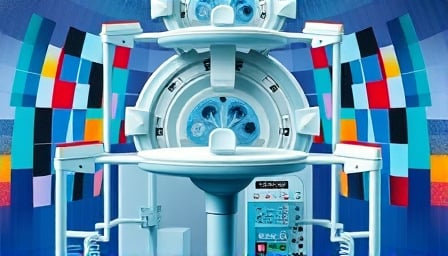Siemens Healthineers Faces a Crucial Pivot: The Diagnostics Sale Question
Siemens Healthineers AG—once a juggernaut in medical technology—has been caught in a trading stalemate that has left investors staring at a flat‑lined chart. The company’s stock has drifted sideways for months, a pattern that signals uncertainty at a time when decisive action is paramount. The latest catalyst: swirling rumors that the firm is actively courting buyers for its diagnostics division—a unit that could fetch several billion euros on the open market.
Why the Diagnostics Unit Matters
The diagnostics arm is not a peripheral hobby; it represents a core pillar of Siemens Healthineers’ portfolio. Its products power hospitals worldwide, generating recurring revenue streams that have historically underpinned the company’s valuation. Yet, this same division has also been a source of friction: integration challenges, margin pressures, and a growing competition from specialty players have eroded its profitability relative to other business lines.
By divesting this unit, Siemens Healthineers could sharpen its focus on high‑margin, high‑growth segments such as imaging systems, surgical technologies, and digital health solutions. The move would also free up capital that could be redirected into R&D or strategic acquisitions, thereby enhancing long‑term shareholder value.
Analysts’ Mixed Signals
Bank of America’s analysts have issued a cautious yet optimistic outlook. While acknowledging a recent dip in the stock’s price, they remain bullish, citing the potential upside of a diagnostics sale. Their stance reflects a broader industry consensus: a divestiture could serve as a “clean‑up” strategy that eliminates underperforming assets and signals managerial resolve to investors.
However, the market’s reaction has not been uniformly positive. In the past five years, an investment in Siemens Healthineers would have yielded significant gains, underscoring the company’s historical resilience. Yet, the recent flat trading range has eroded confidence, hinting that investors are now demanding a clear path forward—one that may well involve relinquishing a sizable revenue stream.
The Stakes for Shareholders
The potential sale is more than a headline; it is a turning point. A successful transaction could unlock intrinsic value that has been suppressed by the company’s current strategic ambiguity. Conversely, a failure to materialize could deepen skepticism and drive further erosion of the share price.
Investors must weigh the pros and cons:
- Pros: Immediate cash infusion, reduced operational complexity, higher return on invested capital, and the opportunity to reinvest in high‑growth sectors.
- Cons: Loss of a steady revenue source, potential short‑term volatility during the transition, and uncertainty over the sale’s valuation.
Conclusion
Siemens Healthineers is at a crossroads. The diagnostics unit’s potential sale could either catalyze a resurgence in the company’s strategic focus or deepen the existing volatility that has plagued its stock. The decision will reverberate through the medical technology sector and set a precedent for how conglomerates manage legacy assets in a rapidly evolving market. Investors should keep a close eye on the next earnings call—there, the company’s leadership may finally provide the clarity that has been sorely missing.
